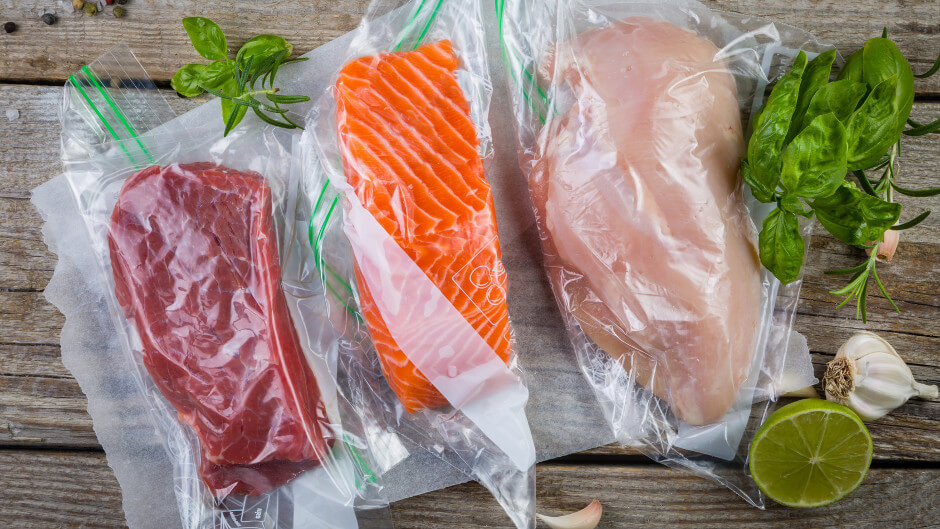Sous-vide method – what is it really about?
Interesting facts, Tips
What is sous vide?
Sous vide (French for “under vacuum”) is a cooking method where food or its ingredients are sealed tightly in plastic bags and cooked in water at a relatively low temperature, which never exceeds 100°C (212°F). In practice, some meats prepared this way are heated to only about 60°C (140°F). While cooking food in a bag might sound like something from a low-end fast food joint, sous vide is a technique mainly used in upscale restaurants—probably because of the effort it requires. And, it’s an effort that truly pays off.
Advantages of vacuum cooking:
What does cooking food in a vacuum-sealed bag give you? Quite a lot, actually. First, the aroma and flavor remain fully in the dish, not lost in the water used for cooking. Second, the kitchen doesn’t get filled with unpleasant smells like cooked cauliflower or fish. Third, the vacuum bag locks in not only the aromas of vegetables or meat but also their nutritional value, color, and texture. Additionally, this method can be used for cooking pre-prepared foods, like seared meat. But what about the downsides of vacuum cooking? There are some.
Home vacuum cooking:
If you don’t have a device that automatically selects and maintains the right temperature, you can still cook sous vide at home. A home sous vide setup should include durable, heat-resistant steam cooking bags, a pot, and a thermometer. If possible, vacuum-seal your food; if not, make sure there’s as little air as possible in the bag. Choose the cooking temperature depending on the dish and ingredients, and monitor it with the thermometer. If the temperature rises too much, you can add a few ice cubes to the pot.
Remember to season your meat or vegetables before cooking, otherwise it will be hard to fix the flavor on the plate later. If everything goes as planned and the meat is cooked long enough, you can enjoy your first true sous vide dish.
What about that appetizing, crispy crust on meat?
Unfortunately, sous vide alone won’t give you a crispy crust because Maillard reactions don’t occur. That’s why a hybrid method of sous vide followed by searing is often used. Simply finish by briefly searing the meat in hot duck or goose fat. Don’t overdo this second step—just sear enough to nicely brown the meat. Keep in mind that the meat’s temperature will continue to rise while searing, so set the sous vide temperature slightly lower than your desired final temperature, for example by about 5 degrees Celsius (9°F).
